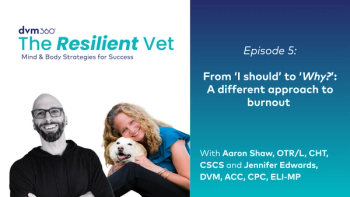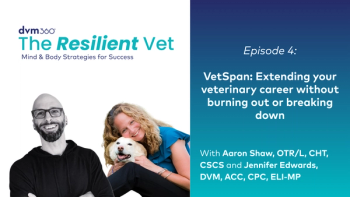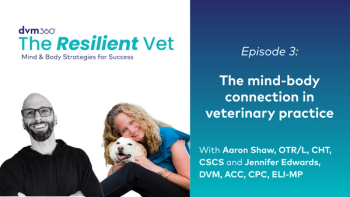
Mindfulness in 5 steps
Part five in this series on self-care for veterinarians looks at the benefits of practicing mindfulness in both veterinary practice and in everyday life.
Former veterinary practice owner and practice management consultant Steve Noonan, DVM, continues his quest to share the mindfulness, happiness and self-care tips that turned his life around with veterinarians and veterinary team members. The choose your own adventure below explores Noonan's thoughts and strategies on mindfulness.
Here's you:
You're busy, stressed out, burnt out, emotionally stretched-thin, trying to balance too many things at once, frustrated with non-compliant clients or just plain worn out.
Enter Dr. Steve Noonan.
He's a super advocate (partly through his own experience) of mindfulness and helping veterianrians handle stress and anxiety.
What is mindfulness?
Mindfulness is rooted in awareness of your own breath, coupled with the intention to remain aware of the present moment and experience life as it really is rather than as a series of thoughts and opinions. The moment you sense or become aware of your breath to the exclusion of other thoughts, even for a fleeting moment, is mindfulness.
But why do I need this?
This sounds New Age-y to me …
Again, see the
Mindfulness is based on Buddhist meditation techniques. Don't let this turn you off! Some teachers, like Jon Kabat-Zinn, remove references to Buddhist philosophy so that learning mindfulness is no different than learning any new skill.
Are you with us now?
Yes: Great! Go on to the next page.
No: Really? Try reading through that
How does it work?
Dr. Noonan suggests trying out these five tips to get started with a mindfulness practice. For even more detail about his personal mindfulness strategies
1. Set your smartphone alarm to chirp 1x/hour while you're awake. Take this moment to close your eyes, wiggle your shoulders and stretch your hands over your head. Inhale and exhale 10x slowly with eyes closed and experience your breath before you get back to work.
2. Take a few slow bites of food when you eat. See if you can experience a new taste or sensation.
3. Pay attention when you drive. Find one new thing you haven't seen before. (Keep driving defensively!)
4. Talk to a coworker and really listen to what's being said without judging or waiting to speak. If you're comfortable doing so, ask what it felt like to be listened to.
5. Download a meditation app. (Noonan likes Buddhify, which has 80 guided meditations, from a few moments to a half hour.)
This is great and all, but I don't think I can do this. I get distracted.
Reset. You've got it.
When your mind wanders during mindfulness exercises-and it will-you're faced with two choices:
1. Criticize yourself. But don't-mindfulness is “without judgment,” remember?
2. Don't criticize yourself. “Oh, my mind has wandered,” you think. “Let me get back to paying attention to my breath or what I was focusing on.”
The key to practice? Paying attention and gently returning to your breath, without criticism, when your mind strays. Dr. Noonan imagines he's flushing the sink of his mind, unclogging useless, fleeting and unhelpful thoughts. This leaves a clean, flowing mind that functions more effectively.
Then start over. Try one of these
Here's you now:
You've got it. Go forth and save lives!
Newsletter
From exam room tips to practice management insights, get trusted veterinary news delivered straight to your inbox—subscribe to dvm360.






